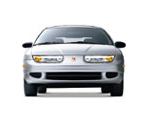Early in my career, I was a young acoustics engineer working at the General Motors “Noise and Vibration Laboratory” (NVL) where our function was to provide automotive noise and vibration control solutions to the various vehicle development teams. At one point, my job was to lead the design and development of the noise control (“Sound Package”) solutions for the original Saturn vehicle line. So when I saw the recent news about Roger Penske & Penske Automotive Group acquiring the Saturn brand from General Motors, I found myself thinking back on the glory days of Saturn: what made them so unique, and what solutions will bring them through the current economic recession?
Saturn’s development program used to be different than all the rest. They gave real responsibility to the individual design teams and enabled them to make the development choices and compromises necessary in putting a vehicle plan together. This responsibility created a sense of pride and personal ownership within each and every individual involved in the program (to this day, I proudly drive my 1997 Saturn SW2 to and from work).
Being a small engineering and development team with limited resources, Saturn leveraged its supply base. Specifically for the acoustics team, this meant selecting a “supplier / partner” that would be responsible for producing the necessary noise control materials and the supplier would then be responsible for being an extended resource for the development of the vehicle. Globe Industries was selected as the single “sound package” supplier, and they supported the program by independently working to identify noise sources and issues on various prototypes and development vehicles in their laboratories and with their technical teams – all at no cost to Saturn other than Saturn’s commitment to purchase the production noise control components from Globe. This was the first (to my knowledge) relationship of its kind between an automobile manufacturer and an independent acoustic products supplier, which ultimately evolved into the vehicle acoustic development process that we now call “automotive acoustic integration”.
Since the original Saturn vehicles were released (1991), the nameplate suffered a lack of commitment from GM leadership, e.g., the convertible was canceled and no new vehicles were developed until 1999 with the release of the 2000 L-series, which was a platform shared with GM European Opel division and the Vectra model. Since then the only “Saturn Engineered” vehicle has been the Saturn VUE (debuted in 2002), which has been their most successful vehicle (in sales). And then in 2003 the Saturn Ion was released as part of the Opel Delta platform.
Unfortunately (as is evidenced in the model history stated above), in early 2000 GM finally sucked Saturn into the corporate fold and made it just another GM brand. This demise of the Saturn “independence” frustrated several talented engineers who decided to quit and establish careers elsewhere.
For now, Saturn will likely just be a name plate buying vehicles from GM (or Opel, Suzuki, or some other foreign manufacturer) and selling them under the Saturn badge at Saturn dealerships. However, even in that scenario it will be advantageous to differentiate the noise control package in Saturn vehicles from e.g., the Chevrolets or to tailor the noise levels for the unique needs of the American consumer. And, with properly developed noise control solutions, it can actually reduce the costs of the sound package material content.
If Roger Penske is going to capitalize on his new investment with Saturn, he will have to incorporate the best practices and design standards that actually work in today’s economy – the kind that will rebuild the American car industry. And in the world of vehicle acoustic development, that means teaming with an independent engineering firm like Acoustics By Design to ensure a superior product at an exceptional price.

I’ve been looking for this exact info on this topic for a while. Bookmarked and recommended!